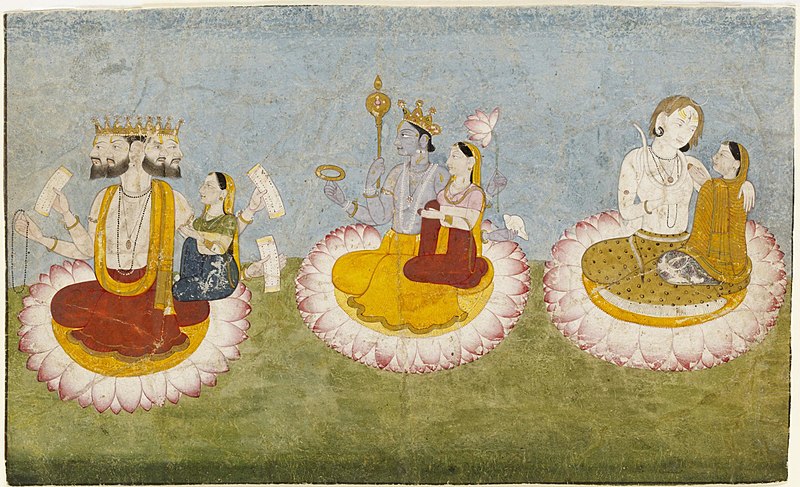Fasciculus:Brahma, Vishnu and Shiva seated on lotuses with their consorts, ca1770.jpg

Mensura huius perspectionis: 800 × 487 elementa imaginalia. Aliae mensurae: 320 × 195 elementa imaginalia | 640 × 389 elementa imaginalia | 1 024 × 623 elementa imaginalia | 1 280 × 779 elementa imaginalia | 2 426 × 1 476 elementa imaginalia.
Sua resolutio (2 426 × 1 476 elementa imaginalia, magnitudo fasciculi: 1.26 megaocteti, typus MIME: image/jpeg)
Historia fasciculi
Presso die vel tempore fasciculum videbis, sicut tunc temporis apparuit.
| Dies/Tempus | Minutio | Dimensiones | Usor | Sententia | |
|---|---|---|---|---|---|
| recentissima | 19:12, 3 Augusti 2020 |  | 2 426 × 1 476 (1.26 megaocteti) | Aavindraa | higher res |
| 05:33, 16 Iunii 2008 |  | 768 × 452 (231 chiliocteti) | Redtigerxyz | {{Information |Description= |Source= |Date= |Author= |Permission= |other_versions= }} | |
| 05:14, 11 Iunii 2008 |  | 768 × 768 (127 chiliocteti) | Abhishekjoshi | {{Information |Description={{en|1=Brahma, Vishnu and Shiva seated on lotuses with their consorts, Saraswati, Lakshmi and Paravati respectively. ca 1770. Guler, India.}} |Source=V&A Museum [http://images.vam.ac.uk/indexplus/result.html?_IXFIRST_=73&_IXSS_ |
Nexus ad fasciculum
Ad hunc fasciculum nectit:
Usus fasciculi per inceptus Vicimediorum
Quae incepta Vici fasciculo utuntur:
- Usus in af.wikipedia.org
- Usus in als.wikipedia.org
- Usus in ba.wikipedia.org
- Usus in bg.wikipedia.org
- Usus in bn.wikipedia.org
- Usus in br.wikipedia.org
- Usus in ca.wikipedia.org
- Usus in cs.wikipedia.org
- Usus in cy.wikipedia.org
- Usus in de.wikipedia.org
- Usus in el.wikipedia.org
- Usus in en.wikipedia.org
- Usus in eo.wikipedia.org
- Usus in es.wikipedia.org
- Usus in eu.wikipedia.org
- Usus in fa.wikipedia.org
- Usus in fr.wikipedia.org
- Usus in he.wikipedia.org
- Usus in hu.wikipedia.org
- Usus in hy.wikipedia.org
- Usus in id.wikipedia.org
- Usus in it.wikipedia.org
- Usus in ja.wikipedia.org
- Usus in kn.wikipedia.org
- Usus in ko.wikipedia.org
View more global usage of this file.

